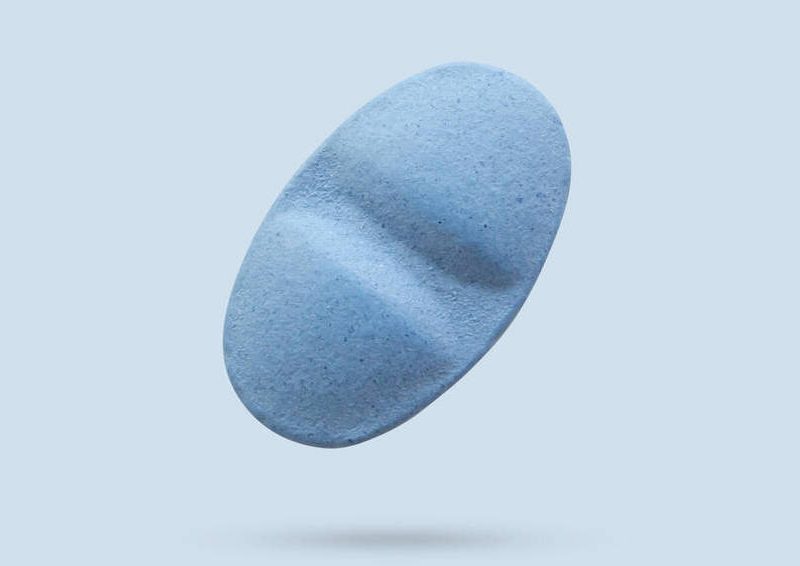36 total views
Understanding Modafinil: Mechanism and Effects
Modafinil is a prescription stimulant commonly used to treat narcolepsy, sleep apnea, and shift work sleep disorder. It is also widely utilized as a cognitive enhancer due to its ability to improve focus, alertness, and overall mental performance. Unlike traditional stimulants such as amphetamines, Modafinil works by influencing dopamine, norepinephrine, serotonin, and histamine neurotransmitters, making it a unique nootropic.
Although Modafinil is generally well tolerated, some individuals experience side effects, including anxiety and panic attacks. Understanding the connection between Modafinil and panic attacks requires an in depth look at its neurological effects and the potential risks associated with its use.
How Modafinil Affects the Nervous System
Modafinil functions as a wakefulness promoting agent by increasing dopamine levels in the brain. Dopamine plays a key role in motivation, reward, and emotional regulation. However, excessive dopamine stimulation can sometimes lead to unwanted psychological effects, including:
- Heightened anxiety
- Increased heart rate
- Jitteriness and restlessness
- Panic attack triggers in susceptible individuals
Additionally, Modafinil influences norepinephrine, a neurotransmitter that stimulates the “fight or flight” response. Increased norepinephrine levels may contribute to feelings of tension, nervousness, and panic episodes, especially in those predisposed to anxiety disorders.
Can Modafinil Directly Cause Panic Attacks?
1. Modafinil Impact on Anxiety Levels
While many users report improved cognitive function and productivity, others experience increased anxiety and panic like symptoms. This can be attributed to Modafinil stimulant properties, which may overactivate the central nervous system. For individuals who already suffer from generalized anxiety disorder (GAD) or panic disorder, the drug may amplify symptoms, leading to heightened distress and panic attacks.
2. Dosage and Individual Tolerance
The risk of experiencing panic attacks while using Modafinil is often dose dependent. Higher doses (200mg – 400mg per day) may increase the likelihood of anxiety related side effects. Those who are sensitive to stimulants or have a low tolerance for dopamine related medications may be at a higher risk of panic episodes.
3. Sleep Disruption and Anxiety
One of the most common side effects of Modafinil is insomnia or reduced sleep quality. Sleep deprivation is a well known trigger for panic attacks and heightened anxiety levels. Individuals who take Modafinil late in the day or experience disrupted sleep cycles may notice increased stress, irritability, and sudden panic attacks.
4. Interaction with Other Medications and Substances
Modafinil can interact with other medications, particularly those affecting neurotransmitters such as SSRIs (selective serotonin reuptake inhibitors), benzodiazepines, and other stimulants. Combining Modafinil with caffeine or other nootropics can further elevate heart rate, blood pressure, and anxiety, potentially leading to panic episodes.
Who Is at Risk of Panic Attacks While Using Modafinil?
Although not everyone experiences anxiety from Modafinil, certain individuals may be more susceptible to panic attacks when using the drug. These include:
- People with pre-existing anxiety disorders
- Individuals prone to panic attacks or heightened stress responses
- Those sensitive to stimulant medications
- Users taking higher doses than recommended
- Individuals combining Modafinil with caffeine or other stimulants
How to Minimize the Risk of Panic Attacks on Modafinil
If you are concerned about Modafinil induced anxiety or panic attacks, there are several strategies to reduce your risk:
1. Start with a Lower Dose
Begin with a low dosage (50mg – 100mg per day) to assess your body reaction. Gradually increasing the dose allows you to monitor for any signs of heightened anxiety or restlessness.
2. Avoid Taking Modafinil Too Late in the Day
To prevent sleep disturbances, it is best to take Modafinil early in the morning. Ensuring proper sleep hygiene reduces the likelihood of experiencing stress related anxiety or panic attacks.
3. Stay Hydrated and Avoid Caffeine
Modafinil can cause dehydration, which may lead to headaches and increased anxiety. Drinking plenty of water and limiting caffeine intake can help mitigate nervousness and jitteriness.
4. Practice Relaxation Techniques
Engaging in meditation, deep breathing, and progressive muscle relaxation can counteract stimulant-induced anxiety. If you feel a panic attack coming on, grounding techniques such as the 5-4-3-2-1 method (identifying five things you see, four things you feel, etc.) can be helpful.
5. Monitor for Drug Interactions
Before taking Modafinil, consult your healthcare provider about possible interactions with other medications, particularly antidepressants, antipsychotics, and blood pressure medications.
When to Seek Medical Advice
If you experience frequent panic attacks, extreme restlessness, heart palpitations, or severe anxiety while taking Modafinil, seek medical attention. In some cases, an alternative medication or dosage adjustment may be necessary to avoid further complications.
Conclusion
Modafinil is an effective cognitive enhancer and wakefulness agent, but it is not free from side effects. While many users tolerate it well, those with anxiety disorders or a history of panic attacks should exercise caution. The risk of panic attacks increases with higher doses, stimulant sensitivity, and sleep disturbances. If you experience anxiety related symptoms, adjusting your dosage, hydration, and lifestyle habits may help mitigate these effects.
‼️ Disclaimer: The information provided in this article about modafinil is intended for informational purposes only and is not a substitute for professional medical consultation or recommendations. The author of the article are not responsible for any errors, omissions, or actions based on the information provided.
References:
- Hersey M, Tanda G. Modafinil, an atypical CNS stimulant? Pharmacological Advances in Central Nervous System Stimulants. Adv Pharmacol. 2024
- Robertson P, Hellriegel ET. Clinical pharmacokinetic profile of modafinil. Clinical Pharmacokinetics. 2003
- Kim D. Practical use and risk of modafinil, a novel waking drug. Environmental Health and Toxicology. 2012
- Modafinil. MedlinePlus. US National Library of Medicine. 2024
- Robert Auger R, Rowley JA, Hashmi SD. Treatment of central disorders of hypersomnolence: an American Academy of Sleep Medicine clinical practice guideline. Journal of Clinical Sleep Medicine. 2021
- Kaplan S, Braverman DL, Frishman I, Bartov N. Pregnancy and Fetal Outcomes Following Exposure to Modafinil and Armodafinil During Pregnancy. JAMA Internal Medicine. 2021
- Slotnik DE. Michel Jouvet, Who Unlocked REM Sleep’s Secrets, Dies. 2017
- Greenblatt K, Adams N. Modafinil. StatPearls. Treasure Island, StatPearls Publishing. 2019


